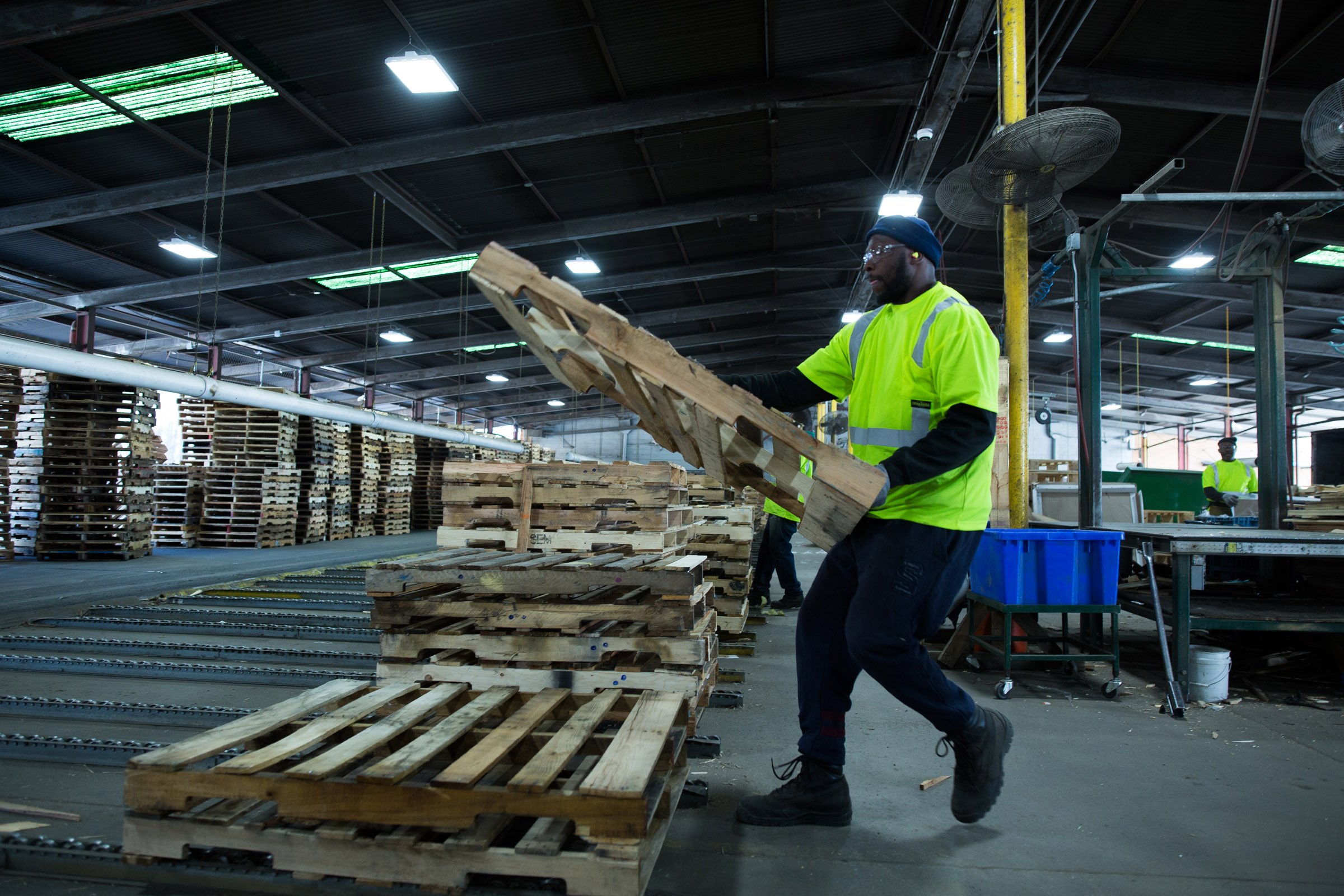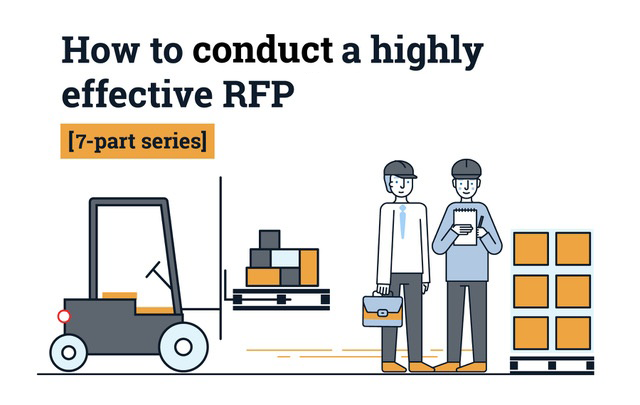Want to Run a Successful Pallet RFP? Don’t Skip this Step. [SERIES]
If your company is putting out an RFP for pallet purchasing or retrieval, invite bidders to conduct site visits and see what you actually need. Our tips for on-site visits will help generate more accurate bids and a more efficient RFP process overall.
Requests for Proposals – or RFPs – are an increasingly prevalent way of doing business in the pallet industry and are almost always required by high volume pallet users that want to collect pricing for a large number of locations efficiently.

Over the years, the 48forty team has participated in hundreds of RFPs, so we consider ourselves pretty savvy at preparing thorough, accurate bids based on the procuring company’s specifications.
[This is the first post in a series about pallet RFP best practices. The second post on communicating with internal stakeholders is also available.]
Despite the apparent simplicity of a pallet itself, not all RFPs run smoothly. Procuring pallets appears pretty straightforward. However, there are nuances that must be considered to do it successfully. If the specifications listed in the RFP don’t match what the company actually uses, bids can be wildly out of line. The winning bid might not actually be the best price if it’s not based on the correct interpretation of the spec. When this happens, specs have to be clarified and pricing re-negotiated, delaying implementation and creating a mess in the operation. Nobody wants that!
If your company is getting ready to put out an RFP for pallet purchasing or retrieval, the best advice I can give you for a successful RFP is to allow on-site visits prior to the bid deadline.
Get the latest industry insights and actionable advice every week.
I know, it sounds like a huge hassle. Depending on how many locations you have and how many vendors you anticipate, site visits can add a significant layer of complexity and time. You may also get push back from your locations that perceive site visits as unnecessary interruptions to day-to-day activities.
Before saying no, consider what can - and in my experience will - happen if you don’t allow for site visits:
You get bids for the wrong spec.
When you’re procuring for a large number of facilities, what you think your facilities are using and what they’re actually using are very often two different things. They may need a higher (or lower) quality grade or need custom versus standard size pallets for a new product line or automated equipment. Wrong specs – and wrong pallets delivered to your facilities – have a big and completely avoidable impact.
[Not sure how to evaluate pallet specs? Learn more about making sure a supplier's specs will meet your needs here.]
Your stated pallet mix is off.
The mix of As, Bs, off, and scrap coming out of each facility is the single most important factor determining your pallet suppliers’ cost to service and therefore price for cores (excess pallets).Just like the pallet specs, the mix of pallets being removed from each of your facilities can, and typically does, vary substantially from what you have on record. Mix changes all the time, so to be sure potential suppliers are basing their price on the reality they’ll deal with, they need to see it for themselves. Otherwise, you won’t get the first few test loads before you’re back renegotiating.
The RFP doesn’t reflect an accurate number of pooled pallets in the mix.
As we all know, pooled pallets are handled differently from recyclable whitewood pallets. How and where they will be sorted and returned to poolers has a significant impact on the cost to serve. You may have access to an accurate volume of pooled pallets over your whole network, but it’s rare to find a company that knows exactly how many pooled pallets flow through each of their facilities. If you assume the volume is easily spread across all of your locations when in fact it varies, the bids you receive will be off, and it’s back to the drawing board.
All of these scenarios can be avoided by inviting bidders to conduct site visits and see first-hand what you actually need at each facility.
The most effective and efficient site visits are very similar to “open houses” where all bidders are invited to your sites on the same days and time. These are not intended to be dog-and-pony shows on your part. In fact, we prefer you don’t do any special prep for onsite visits. We want to see your actual operations and have the opportunity to ask questions.
[The right supplier is based on your needs and how well the supplier's capabilities align. Get the full guide on how to select the right supplier here.]
In addition to being efficient, having all bidders come at one time also ensures everyone has the same opportunity and no one company is shown special favors. And, those who make the effort to attend demonstrate a true interest in your business.
If you don’t think you have time for site visits, make time. Building extra time on the front end is far better than having to add weeks or even months AFTER a bid is awarded to renegotiate and then implement. It’s much better to go into an RFP with accurate expectations and specifications than to scramble after the fact.
Now, back to that RFP I was working on…
[This is the first post in a series about pallet RFP best practices. The next post covers the importance of communicating with internal stakeholders and is available here.]

